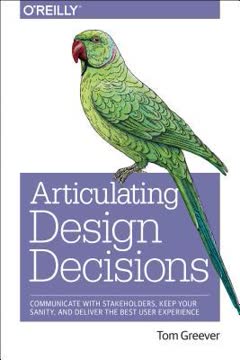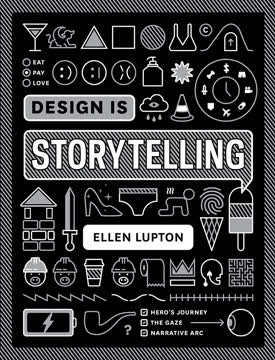Key Takeaways
1. Emotion and cognition are intertwined, shaping our interactions with objects
Emotions are inseparable from and a necessary part of cognition. Everything you do has both a cognitive and an affective component—cognitive to assign meaning, affective to assign value.
Emotional impact of design. Our interactions with objects are not purely rational but deeply emotional. The way we perceive, use, and value products is influenced by both our cognitive understanding and our emotional response. This interplay between emotion and cognition affects our decision-making, problem-solving, and overall satisfaction with products.
Neurochemical influence. Emotions change how we think by altering the brain's operating parameters through neurochemicals. Positive emotions broaden our thought processes and facilitate creative thinking, while negative emotions narrow our focus. This has significant implications for design, as products that evoke positive emotions can enhance our ability to find creative solutions and overlook minor problems.
Practical applications:
- Designers should consider both the functional aspects and emotional impact of their creations
- Products that elicit positive emotions are more likely to be successful and enjoyable to use
- Understanding the emotional needs of users can lead to more effective and satisfying designs
2. Visceral, behavioral, and reflective: The three levels of emotional design
The visceral level is pre-consciousness, pre-thought. This is where appearance matters and first impressions are formed. Visceral design is about the initial impact of a product, about its appearance, touch, and feel.
Visceral design appeals to our innate preferences and automatic responses. It's about immediate emotional impact and first impressions, focusing on appearance, touch, and sound. This level is largely universal across cultures and is based on biological predispositions.
Behavioral design concerns the pleasure and effectiveness of use. It's about function, understandability, usability, and physical feel. Good behavioral design makes a product easy to understand and use, enhancing the user's sense of control and mastery.
Reflective design is about message, culture, and the meaning of a product or its use. It deals with self-image, personal satisfaction, and memories. This level is the most vulnerable to variability through culture, experience, and individual differences.
Key considerations for each level:
- Visceral: Focus on immediate sensory appeal
- Behavioral: Prioritize usability and functionality
- Reflective: Consider long-term user satisfaction and personal significance
3. Attractive things work better: The power of positive affect
When you are in a state of positive affect, the very opposite actions take place. Now, neurotransmitters broaden the brain processing, the muscles can relax, and the brain attends to the opportunities offered by the positive affect.
Cognitive benefits. Attractive designs do more than just please the eye; they actually improve cognitive performance. When we encounter aesthetically pleasing objects, our brain's processing becomes more relaxed and open, leading to more creative and flexible thinking.
Usability perception. Users tend to be more tolerant of minor usability issues in attractive products. This doesn't mean that functionality should be sacrificed for aesthetics, but rather that a balance between the two can lead to a more positive overall user experience.
Effects of positive affect on users:
- Increased creativity and problem-solving ability
- Greater tolerance for minor difficulties
- Enhanced focus on opportunities rather than obstacles
- Improved overall satisfaction with the product
4. Personalization transforms mass-produced objects into meaningful possessions
To make something personal means expressing some sense of ownership, of pride. It means to have some individualistic touch.
Emotional attachment. Personalization allows users to form deeper emotional connections with mass-produced objects. By adding their own touches or modifying items to suit their needs, people transform generic products into unique, meaningful possessions.
Methods of personalization:
- Customization options provided by manufacturers
- User modifications and adaptations
- Accumulation of personal history and memories associated with the object
Design implications:
- Create products that allow for easy customization or modification
- Design objects that age gracefully, showing signs of use in an aesthetically pleasing way
- Provide opportunities for users to add their own personal touches to products
5. Trust and emotional bonds are crucial in human-technology interactions
Trust implies several qualities: reliance, confidence, and integrity. It means that one can count on a trusted system to perform precisely according to expectation.
Building trust. Trust is essential for successful human-technology interactions. Users need to feel confident that a product will perform reliably and meet their expectations. This trust is built through consistent performance, clear communication, and appropriate feedback.
Emotional engagement. Beyond mere functionality, products that create emotional bonds with users are more likely to be successful. This can be achieved through personalization, responsive design, and features that demonstrate an understanding of the user's needs and preferences.
Key factors in building trust and emotional bonds:
- Consistent and reliable performance
- Clear, honest communication about product capabilities and limitations
- Appropriate feedback that keeps users informed about system status
- Features that demonstrate empathy and understanding of user needs
6. Fun and pleasure are essential elements of good design
Positive emotions are as important as negative ones—positive emotions are critical to learning, curiosity, and creative thought, and today research is turning toward this dimension.
Beyond functionality. While usability and functionality are crucial, incorporating elements of fun and pleasure can significantly enhance the user experience. Enjoyable interactions lead to increased engagement, satisfaction, and loyalty.
Benefits of positive emotions:
- Enhanced learning and creativity
- Increased tolerance for minor usability issues
- Greater overall satisfaction with the product
- Improved brand perception and user loyalty
Design strategies for fun and pleasure:
- Incorporate playful elements that surprise and delight users
- Use aesthetically pleasing visual and auditory feedback
- Create opportunities for users to experience small victories or achievements
- Balance serious functionality with moments of levity and enjoyment
7. Robots and emotional machines: The future of human-technology relationships
As machines become more and more capable, taking on many of our roles, designers face the complex task of deciding just how they shall be constructed, just how they will interact with one another and with people.
Emotional intelligence in machines. As robots and AI systems become more advanced, incorporating emotional intelligence will be crucial for effective human-machine interaction. This includes the ability to recognize and respond appropriately to human emotions, as well as to display appropriate emotional responses.
Ethical considerations:
- Ensuring that emotional machines do not manipulate or exploit human emotions
- Balancing the benefits of emotionally intelligent machines with privacy concerns
- Addressing the potential social and psychological impacts of human-like emotional responses in machines
Future applications:
- Emotionally responsive personal assistants and caregivers
- Enhanced human-robot collaboration in various industries
- More natural and intuitive interfaces for complex technological systems
8. We are all designers: Customization as a form of personal expression
We are all designers. We manipulate the environment, the better to serve our needs. We select what items to own, which to have around us. We build, buy, arrange, and restructure: all this is a form of design.
Everyday design. Design is not limited to professionals; we all engage in design activities in our daily lives. From arranging our living spaces to customizing our digital interfaces, we constantly make design decisions that reflect our personalities and needs.
Empowering users. Recognizing the user as a designer shifts the focus from creating perfect, finished products to providing flexible platforms that users can adapt and personalize. This approach leads to more satisfying and meaningful interactions with technology and objects.
Ways we act as designers in everyday life:
- Arranging furniture and decorating living spaces
- Customizing digital interfaces and personal devices
- Creating personal websites and social media profiles
- Modifying and repurposing objects to suit our needs
Last updated:
FAQ
What's Emotional Design: Why We Love (or Hate) Everyday Things about?
- Exploration of Emotions: The book explores how emotional responses to everyday objects influence perceptions and interactions. Norman argues that emotions are integral to design, affecting usability and satisfaction.
- Three Levels of Design: It introduces visceral, behavioral, and reflective design levels, each addressing different aspects of human interaction with products.
- Aesthetics and Functionality: Norman emphasizes that attractive designs enhance functionality and user experience, positing that "attractive things work better."
Why should I read Emotional Design by Donald A. Norman?
- Insight into User Experience: The book provides valuable insights for designers and marketers on how emotions influence consumer behavior and product interaction.
- Practical Applications: Norman offers advice on incorporating emotional design principles into products, leading to better user satisfaction and loyalty.
- Cultural Relevance: It discusses the cultural implications of design, making it relevant for global markets and helping create products that resonate across cultures.
What are the key takeaways of Emotional Design?
- Emotions Drive Decisions: Emotions significantly influence decision-making, often more than logic. Norman states, "Emotion makes you smart," highlighting the necessity of emotional engagement in design.
- Three Levels of Processing: The visceral, behavioral, and reflective levels of design are crucial for creating successful products, each requiring different strategies.
- Aesthetic Appeal Matters: Aesthetics play a critical role in usability and user satisfaction, with attractive designs leading to better performance and engagement.
What are the best quotes from Emotional Design and what do they mean?
- "Attractive things work better.": This encapsulates the thesis that aesthetics influence functionality, suggesting visually appealing products encourage positive engagement.
- "Emotions are inseparable from and a necessary part of cognition.": This highlights the interconnectedness of emotion and thought, shaping our understanding and interactions.
- "The objects in our lives are more than mere material possessions.": This reflects the idea that products carry personal significance and memories, underscoring emotional connections.
How does Donald A. Norman define the three levels of design in Emotional Design?
- Visceral Design: Focuses on immediate emotional responses to a product's appearance, creating an attractive first impression.
- Behavioral Design: Addresses how well a product performs its intended function and its ease of use, emphasizing usability.
- Reflective Design: Involves deeper meanings and personal associations with a product, shaping self-image and long-term attachment.
How does Emotional Design relate to product usability?
- Usability and Emotion: Emotional responses can enhance or hinder usability, with positive emotions leading to more effective use and enjoyment.
- Designing for Emotions: Designers should consider emotional factors to create intuitive and satisfying experiences.
- Feedback Mechanisms: Effective feedback enhances emotional engagement, making users feel in control and informed.
What role do aesthetics play in Emotional Design?
- Aesthetics Influence Perception: Visual appeal significantly affects how users perceive functionality, with attractive designs leading to favorable experiences.
- Emotional Connection: Aesthetics create emotional connections between users and products, often more critical to success than practical elements.
- Cultural Significance: Aesthetic preferences vary across cultures, impacting user experiences and requiring consideration in global design.
How can designers apply the concepts from Emotional Design?
- Focus on User Emotions: Prioritize understanding emotional responses through user testing and feedback.
- Integrate Aesthetics with Functionality: Blend beauty with usability to ensure products are both attractive and functional.
- Create Meaningful Experiences: Aim to foster emotional connections, enhancing user loyalty and satisfaction.
How does Emotional Design address the concept of anthropomorphism?
- Human-Like Qualities: Users often attribute human-like characteristics to objects, enhancing emotional connections.
- Impact on Interaction: Anthropomorphic traits foster companionship and trust, leading to positive experiences.
- Examples in Design: Successful products utilize anthropomorphism to evoke emotional responses and engagement.
What examples does Emotional Design provide to illustrate its concepts?
- Teapots as Design Examples: Norman uses teapots to illustrate visceral, behavioral, and reflective design aspects.
- The NFL Headset Case Study: Highlights the balance of functionality and self-image in reflective design.
- Video Games and Emotional Engagement: References games like The Sims to demonstrate emotional design in creating engaging experiences.
How does Emotional Design relate to the future of technology and robots?
- Emotional Robots: Future products, including robots, may need to understand and respond to human emotions for intuitive interactions.
- Designing for Interaction: Emotional design principles can guide the development of emotionally engaging robots.
- Ethical Considerations: Raises questions about the ethical implications of emotional attachments to robots.
What challenges does Norman identify in implementing emotional design?
- Complexity of Emotions: Human emotions are complex and difficult to predict, posing challenges for designers.
- Balancing Functionality and Emotion: Ensuring emotional design does not compromise usability or performance.
- Cultural Differences: Designing products that resonate universally requires understanding diverse cultural contexts.
Review Summary
Emotional Design received mixed reviews. Many praised its insights on how emotions affect design and user experience, especially in the first half. The book's framework of visceral, behavioral, and reflective design layers was appreciated. However, some found the later chapters on robots and AI less relevant or interesting. Readers valued the numerous examples and anecdotes but criticized repetitiveness and outdated content. Overall, it's considered a worthwhile read for designers, though not as impactful as Norman's earlier work, "The Design of Everyday Things."
Similar Books










Download PDF
Download EPUB
.epub digital book format is ideal for reading ebooks on phones, tablets, and e-readers.






